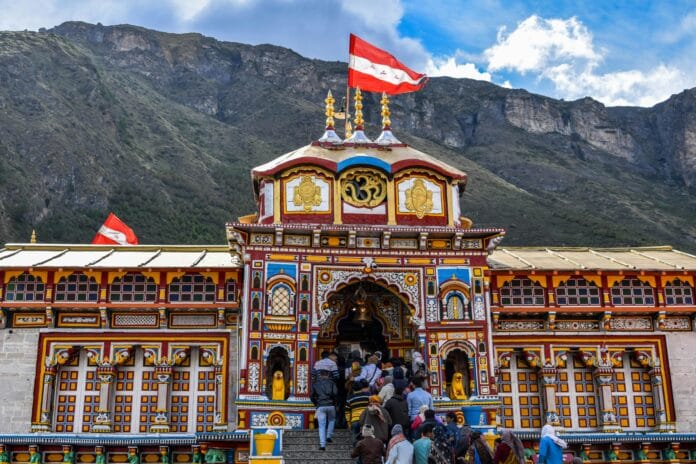Introduction
Tucked away in the serene lap of the Garhwal Himalayas, Badrinath is not just a destination – it’s a spiritual awakening. As one of the four sacred places in Char Dham Yatra, Badrinath attracts pilgrims and travelers from all over the world.As one of the four religious pilgrimage places and the Chhotar Char Dham circle, this sacred city attracts millions of devotion and travelers each year, looking for the divine blessings of Lord Vishnu, who is worshipped here as Badri Narayan. With its deep roots mythology, fantastic architecture and wonderfully natural beauty, this sacred town offers a divine experience unlike any other.
If you’re planning a spiritual journey to Badrinath in 2025, this comprehensive travel guide offers everything you need — from mythology and temple history to travel tips, opening dates, and the best places to explore nearby.
Spiritual Significance of Badrinath temple
The Badrinath Temple, dedicated to Lord Vishnu, is considered one of the holiest shrines in Hinduism. According to legend, Lord Vishnu meditated here for thousands of years, and Goddess Lakshmi stood over him in the form of a Badri tree to shield him from the harsh weather — hence the name Badrinath.
This sacred temple is one of the Char Dham (four abodes), along with Kedarnath, Gangotri, and Yamunotri. Completing the Char Dham Yatra is believed to wash away sins and help attain moksha (liberation).
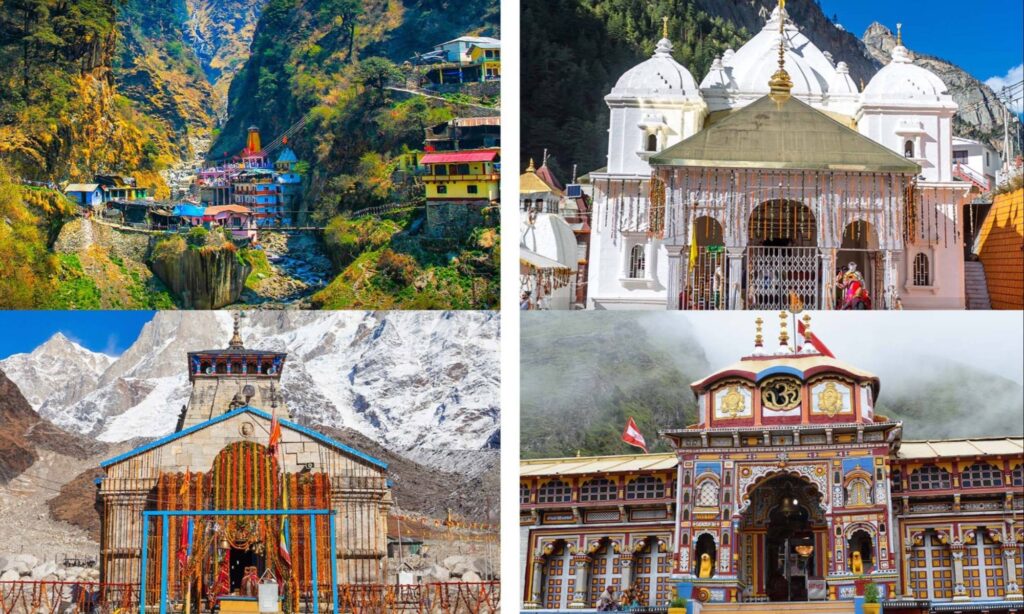
The Mythology and History of Badrinath Temple
The Badrinath Temple, also known as Badri Vishal, is believed to have been established by Adi Shankaracharya in the 9th century to revive Hinduism. He discovered a black stone Shaligram idol of Lord Vishnu in the Alaknanda River and enshrined it in a cave near Tapt Kund (a natural hot spring).Over time, the temple was rebuilt and expanded by various kings and devoted. Today, it is a testimony of the living spiritual legacy of India, which inspires astonishment and devotion.
Mythology says this is where the Pandavas from the Mahabharata crossed into their final journey toward heaven. The temple and region are rich with such mythic resonance — every rock and river feels like it carries a story.
Architectural Features of the Badrinath Temple
The Badrinath Temple stands at an altitude of 3,133 meters (10,279 feet), It follows traditional North Indian temple architecture with a conical-shaped roof, arched windows, and a small gold cupola on top. The sanctum houses the meditative idol of Lord Vishnu in Padmasana, flanked by Nar and Narayan.
Surrounding the temple are stunning Himalayan peaks, such as Neelkanth Parvat, which glows with golden hues during sunrise. The Tapt Kund hot springs nearby are considered spiritually purifying and are used by pilgrims for ritual bathing before darshan.
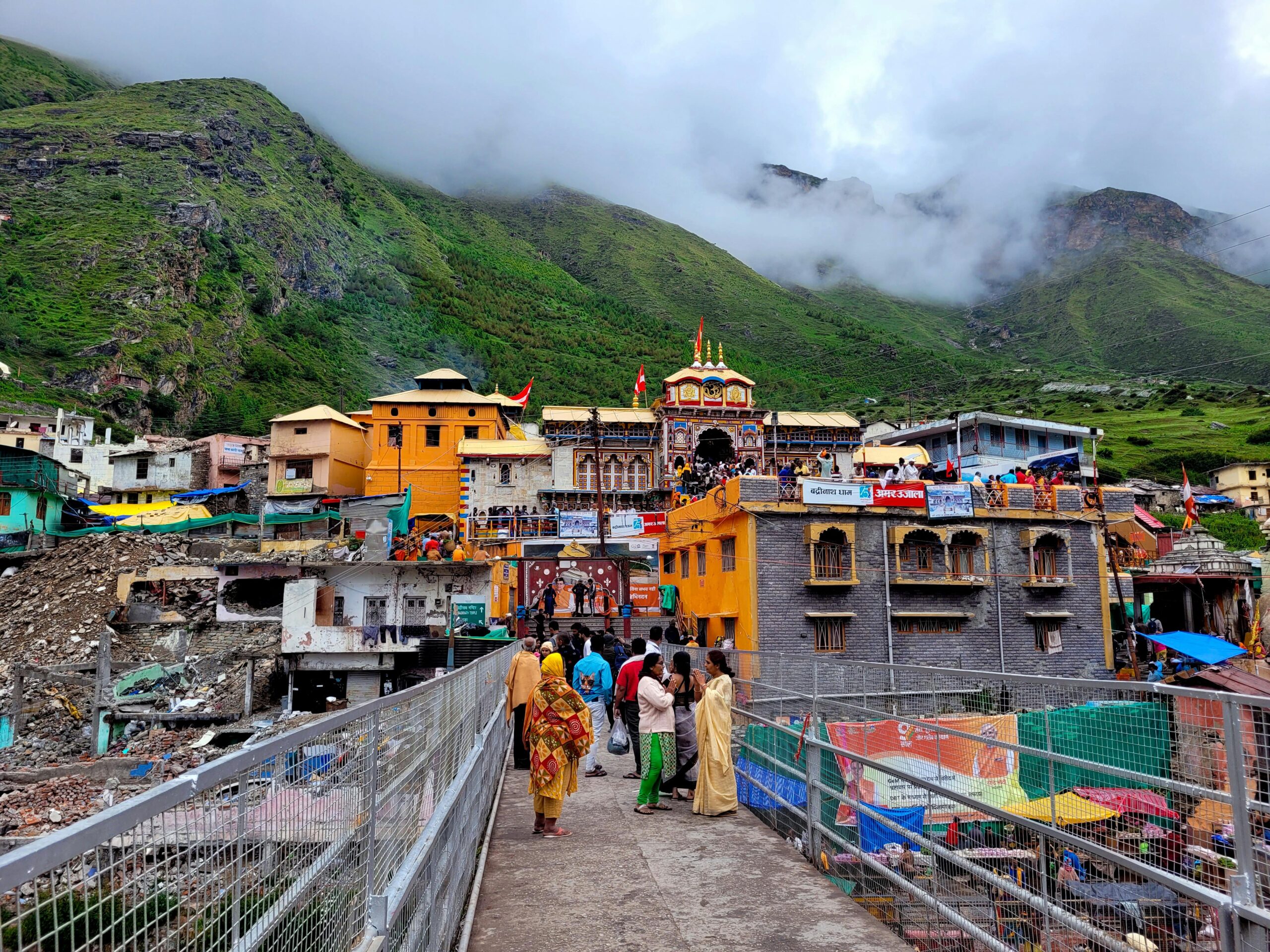
How to Reach Badrinath
- By Air: The nearest airport is Jolly Grant Airport, Dehradun (~315 km away). Taxis and buses are available.
- By Train: Nearest major railway station is Haridwar or Rishikesh.
- By Road: Badrinath is well-connected by motorable roads. You can drive or take buses from Rishikesh, Haridwar, or Joshimath.
Badrinath Temple Opening & Closing Dates 2025
- Opening Date: May 4, 2025 (tentative, based on Akshaya Tritiya)
- Closing Date: November 6, 2025 (tentative, on Vijayadashami or Bhai Dooj).
Best Time to Visit Badrinath
The best time to visit Badrinath is between May and June, and September to early November. Monsoons (July–August) can be risky due to landslides. Winters (November–April) are off-limits as the temple closes and the area is covered in heavy snow.
Accommodation in Badrinath
From budget dharamshalas to comfortable guest houses and a few mid-range hotels, Badrinath offers ample stay options.
- GMVN Guest Houses (affordable & clean)
- Private lodges and ashrams for pilgrims
- Hotels in Joshimath (a good base station with better amenities)
It’s best to book in advance, especially during peak pilgrimage month.
Must-Visit Spiritual Sites Near Badrinath
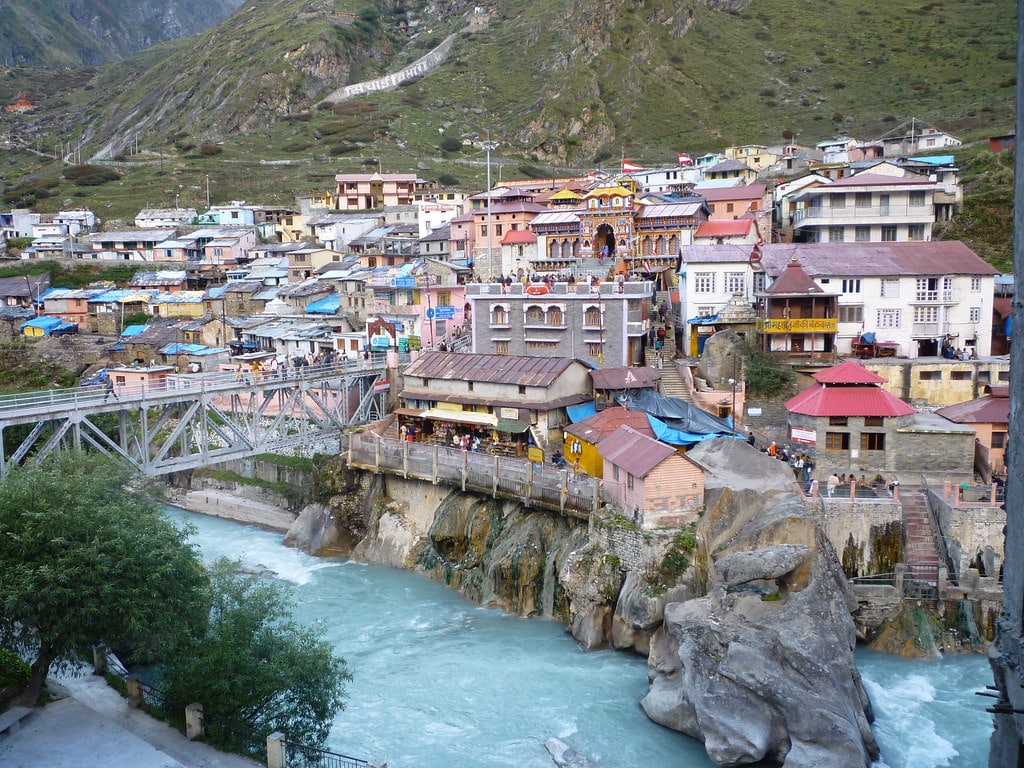
- Brahma Kapal: Located just 100 meters north of the Badrinath Temple on the banks of the Alaknanda River, Brahma Kapal is a highly sacred ghat where rituals for deceased ancestors (Pind Daan and Shraddha) are performed. It is believed that Lord Brahma himself resides here and that performing rituals at this site helps the souls of ancestors attain moksha (liberation). Unlike in other places, it is said that after performing Shraddha at Brahma Kapal, no further rituals are required elsewhere. This makes it one of the most significant ancestral ritual sites in India.
- Alaknanda River: The Alaknanda River, a major tributary of the Ganges, originates from the Satopanth Glacier near the Chaukhamba peak and flows beside the Badrinath Temple.Pilgrims consider its waters to be purifying and spiritually potent. Many devotees take a dip in the river before entering the temple, often stopping at the Tapt Kund, a natural hot spring believed to cleanse sins and heal ailments.
- Mana Village: Just 3 km from Badrinath lies Mana, famously known as India’s last village before the Tibetan border. This quaint Himalayan hamlet is inhabited by the Indo-Mongolian tribe of Bhotias, who believe themselves to be descendants of the Pandavas.Mana is not only breathtakingly scenic but also steeped in Mahabharata mythology. Legend has it that the Pandavas passed through this village on their journey to heaven via the Swargarohini trail.
- Vyas Gufa: Located in Mana Village, Vyas Gufa is the ancient cave where Sage Ved Vyas is said to have composed the Mahabharata, with Lord Ganesha acting as his scribe. The cave has a small shrine with an idol of Ved Vyas and is an important stop for devotees and scholars alike. Inside the cave, you’ll also see naturally formed stone slabs resembling pages of a book, adding to the legend’s authenticity and mystique.
- Charan Paduka: Just 3 km uphill from Badrinath lies Charan Paduka, a large boulder imprinted with what are believed to be the footprints of Lord Vishnu. The climb is relatively moderate and offers sweeping views of the valley below. Pilgrims believe that Lord Vishnu first set foot on earth at this very spot before descending into the valley. The serene surroundings and spiritual aura make this short trek a rewarding experience.
- Vasudhara Falls: Located about 5 km from Mana Village, Vasudhara Falls is a spectacular cascade plunging from a height of 400 feet amidst the Garhwal Himalayas. Legend has it that only those who are pure of heart can truly experience the beauty of this fall. It is also believed that the Pandavas visited this spot during their final journey. The trail to Vasudhara is moderately challenging, but the views — and the energy — are unforgettable.
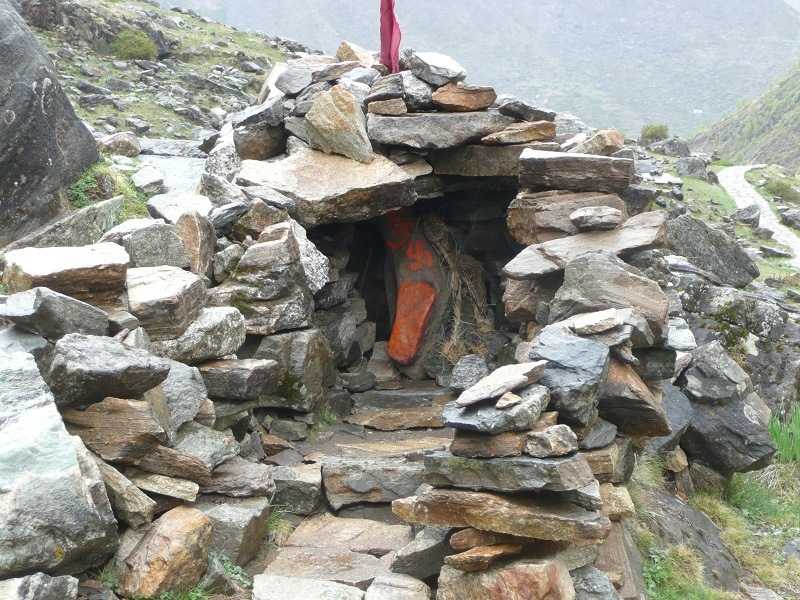
Tips for Pilgrims and First-Time Visitors
- Acclimatize before going higher — spend a day in Joshimath if needed.
- Carry warm clothes, even in summer — temperatures can drop quickly.
- Trekking shoes are recommended for exploring areas around Mana.
- Start early in the morning for darshan — queues build up fast.
- Avoid plastic — Badrinath is an eco-sensitive zone.
- Respect local customs and religious protocols.
conclusion
This Badrinath Travel Guide is more than just one root map – it’s an invitation to experience God. Whether you are a pilgrim on a holy mission or a traveler who chased the peace in the Himalayas, Badrinath will fulfill you spiritually and emotionally.
From echoes in the valley to the snow -covered glow in Alakanand, everything here whispers the eternal appearance of divine.Make Badrinath to your next spiritual migration.

